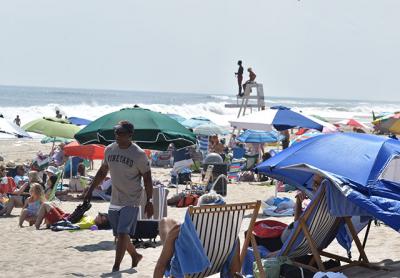Eye Accessory Building Basement Prohibition
Eye Accessory Building Basement Prohibition
Ambiguous language in the East Hampton Village code and the potential for thousands more square feet of habitable space in residences were described by Ken Collum, the village building inspector, at a village board work session last Thursday, prompting the board to consider changes to the law governing accessory buildings. The board also heard a heartfelt plea from Leonard Ackerman, an East Hampton resident and attorney, that health-care personnel or family members be allowed to live in accessory buildings.
“We’re looking for some direction, because we have seen several detached accessory structures, quite large, with full basements underneath them,” Mr. Collum said, and the result is that “we’re loading properties up with large bedroom counts.”
Mr. Collum explained that property owners are building garages and other detached structures with full basements that contain the mechanical equipment necessary for heating and plumbing in their houses. Basements in accessory structures are not counted in floor-area calculations, so allowing such equipment to be in them frees the basements of houses for habitable space, adding to the number of bedrooms and attendant density. To correct this, Mr. Collum suggested a prohibition on basements or crawl spaces under accessory buildings.
Pool houses are among the accessory structures Mr. Collum is concerned about. Pointing out that a garage can have a sink on its ground floor, and a pool house can have a sink and a toilet, he said, “Over the years it has been a problem for the zoning board of appeals and for the Building Department to police” them. “But other accessory structures, there’s no prohibition on plumbing. We’re looking to see if the board is fine with that, or they want to look to regulate that.” He also suggested an amendment requiring pool houses to be freestanding rather than attached to an existing or new structure.
Abuses of the code will mount as the village grows and more affluent people build here, Mayor Paul F. Rickenbach Jr. predicted, and he asked Linda Riley, the village attorney, to draft code amendments.
Mr. Ackerman addressed the board with regard to a proposal he had submitted in July. Under the proposal, an accessory structure of no more than 500 square feet and without a kitchen would be allowed for nursing personnel or family members. The impetus was his late wife’s illness, he told the board.
“During the course of her illness, I became concerned for the community, and for people aging, as I am and my family is. . . . I did not want my wife to go to a nursing home, and I wanted to have full-time staff. I make it personal because it was personal to me. . . . I think there is a need for this, and I ask respectfully for you to consider it.”
Applicable property would have to be a minimum of four acres and the property’s main house would have to be pre-existing and conforming. “Because we’re so concerned today with dealing with affordable housing, and housing for young people who want to stay in our community, it provides a place for families to keep intact and provide housing,” he said.
Mr. Ackerman had been disappointed and offended by the board’s initial tepid response to what was for him a very personal matter, he said, but “I’m very encouraged by this board, that you’re open to discussing these things.”
In fact, Barbara Borsack, a village trustee, told him that she and Arthur Graham, another board member, are on a committee discussing affordable housing, “and your proposal is part of the discussion.”
Open that discussion to the community, Mr. Ackerman urged. The committee will deliberate, the mayor answered, “and then they will bring that back to the board of trustees. Assuming at some point in time there’s enough of a consensus, we will codify language through counsel to have a public hearing.”
Mr. Ackerman pressed his case. “You have the ability to make some significant changes . . . with respect to aiding the aged, the autistic, the disabled,” he said. “I think you should move in that direction.”
In other topics at the work session, a previous discussion about restrictions on gasoline-powered leaf blowers continued when Scott Fithian, the superinpublic works, displayed and demonstrated battery-powered models.
Residents frequently have complained about the noise and pollution produced by gas-powered landscaping equipment. Mr. Graham, whom the mayor had asked to research the matter, said new electric models were “perfectly adequate for the light cleanup that we usually find landscapers doing in the summertime.”
A Memorial-Day-to-Labor-Day ban on gas-powered leaf blowers, or all gas-powered landscaping equipment, is one course the board could pursue, he said. “Obviously, for the fall cleanups, you need the gas-powered equipment for the power. But I think that largely we’ll find that the electrically-powered equipment is adequate for most of the uses.”
To soften the financial impact to landscapers, Mr. Graham suggested that mandating the use of electric-powered equipment could be phased in. Residents would have to understand, he said, that landscapers would be likely to pass some of the cost of new equipment on to their customers. Landscapers are “an integral part of community,” he said, and “one reason why our village is so beautiful. We don’t want to hurt them. We really want to find a way to work with all of the stakeholders to come up with what we feel is the smartest solution.”


